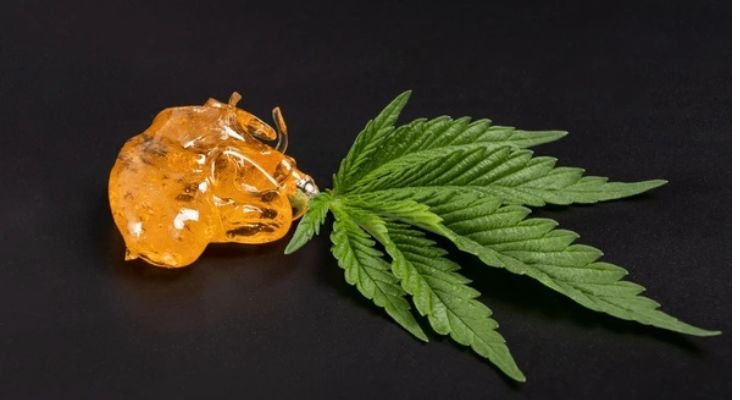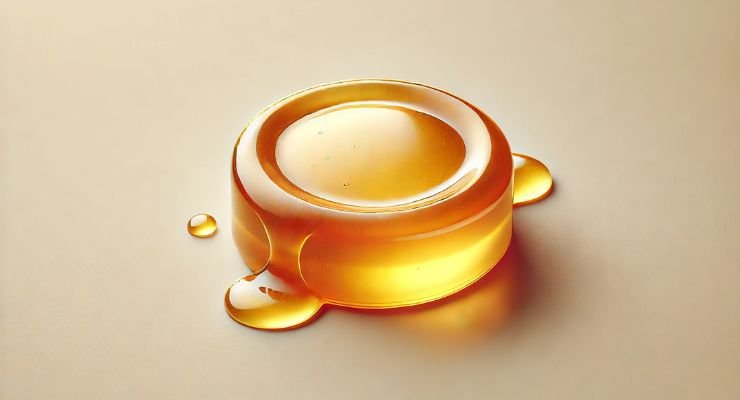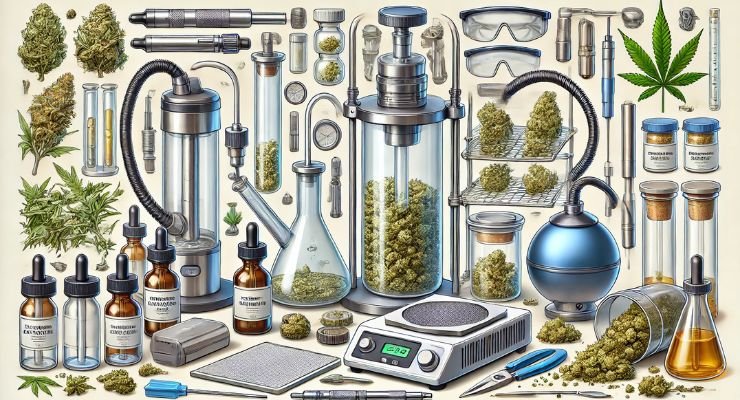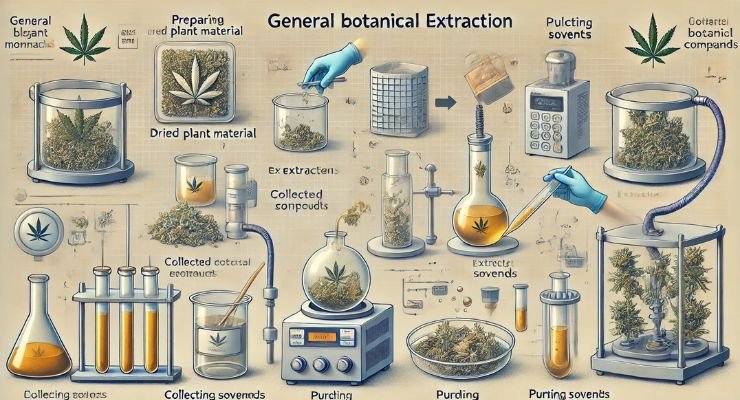
Making THC wax at Home has become popular among cannabis users who enjoy stronger effects and want to save money. This concentrate is known for its high THC content, making it much more potent than regular cannabis flowers. Many people prefer it for dabbing or vaping because it delivers quick and intense results.
However, the process of making THC wax is not simple. It involves using solvents and high temperatures, which can be dangerous if not handled correctly. That’s why safety is the most important part of this process. If done carefully, you can create a high-quality product, but mistakes can lead to serious risks.
This guide will take you through each step of making THC wax, from the materials you need to the exact process and safety precautions. Whether you’re new to concentration or looking to improve your skills, this step-by-step guide will help you do it safely and correctly.
What Is THC Wax?

THC wax, also known as weed wax, is a highly concentrated cannabis extract with a soft, wax-like texture. It contains a much higher THC percentage than traditional cannabis flowers, typically ranging from 60% to 90%, compared to the 15% to 30% found in regular buds. This makes it one of the most potent cannabis products available.
There are different types of THC wax, each with its own texture and consistency:
- Budder – This type of THC wax has a soft, creamy texture, similar to butter. It is easy to handle and spread, making it a favorite among dabbers. Budder is made by whipping the extract during processing to create a smooth consistency.
- Crumble – Known for its dry, crumbly texture, crumble is easy to break apart and use. It is less sticky than other concentrates, making it convenient to handle. Despite its brittle form, it has high power and strong effects.
- Shatter – This concentrate has a hard, glass-like appearance and breaks easily, similar to shattered glass. It is one of the purest forms of THC wax and delivers potent effects. When heated, it melts into a smooth, vaporous concentrate.
- Live Resin – Made from fresh, flash-frozen cannabis instead of dried flowers, live resin preserves more aromatic compounds, giving it a strong aroma and flavor. It has a sticky, sauce-like consistency and is highly valued for its enhanced taste and potency.
THC wax is most commonly consumed through dabbing or vaping, but some users mix it with flowers in bowls. Due to its strength, only a small amount is needed to feel its effects. While it provides a more intense high, beginners should start with caution to avoid intense effects.
Materials And Equipment Needed

- High-quality cannabis buds – Dried cannabis is essential for making THC wax. The better the quality, the more rich and flavorful the final concentrate will be.
- Solvent – Butane hash oil (BHO), CO₂, or isopropyl alcohol helps extract THC from cannabis. Each solvent has different safety considerations and affects the final product’s purity and consistency.
- Extraction tube – A glass or stainless steel tube holds the cannabis as the solvent flows through, separating cannabinoids and natural oils from the plant material. It must be strong and heat-resistant.
- Glass or silicone collection dish – This dish collects the extracted concentrate once the solvent evaporates. Silicone prevents sticking, while glass makes it easy to monitor the process.
- Vacuum chamber – Used to remove any remaining solvents from the wax, ensuring a cleaner and safer final product. This step is important for making high-quality THC concentrates.
- Heating pad – Helps speed up solvent evaporation by applying gentle heat. Proper temperature control is essential to avoid burning off or altering the concentrate’s power.
- Dab tool – A small, heat-resistant tool designed for handling sticky THC wax. It makes it easier to scoop, apply, and use the concentrate without making a mess.
- Protective gear – Gloves, safety goggles, and ventilation protect against harmful fumes and skin contact with solvents, reducing health risks during the extraction process. Safety is a top priority.
Step-by-Step Process To Make THC Wax

Step 1: Preparing Your Cannabis
This step focuses on getting your cannabis ready for extraction:- Choosing the Right Buds: To achieve the highest strength, select high-quality cannabis buds rather than leaves or stems. The buds contain the highest concentrations of THC (tetrahydrocannabinol) and other cannabinoids.
- Strength Matters: Choose strains known for their high THC content if the goal is to produce a strong concentrate. Well-dried cannabis ensures better extraction efficiency and prevents mold or moisture from contaminating the final product.
- Grinding the Buds: Lightly grind the buds to break them into smaller pieces, increasing the surface area for better extraction. However, avoid grinding them too finely, as this can result in extracting unwanted plant material like chlorophyll, which negatively affects the flavor and purity of the wax.
Step 2: Extraction Process
This is where cannabinoids, like THC, are separated from the plant material using a solvent:- Solvent Use: Common solvents include butane (BHO) or CO2. Butane is more common for home extractions due to its effectiveness and lower cost, while CO2 is often used in professional setups for cleaner extraction.
- Packing the Tube: Place the ground cannabis inside an extraction tube (usually made of stainless steel or glass). Leave some space for the material to expand as the solvent moves through.
- Extracting Cannabinoids: Slowly pass the solvent through the tube, which dissolves cannabinoids like THC and CBD, along with terpenes (aromatic compounds).
- Collection: The liquid mixture, made up of the solvent and extracted cannabinoids, drips into a collection dish below. Later, the solvent will be removed through a purging process.
⚠ Caution: Butane is highly flammable, so perform this process outdoors or in a very well-ventilated space. Avoid open flames, static electricity, or sparks nearby to prevent explosions.
Step 3: Purging The Solvent
This process removes residual solvents to ensure the wax is safe for consumption:- Evaporation Process: Gently heat the collection dish to around 90-100°F (32-38°C) to evaporate the butane or CO2 without degrading the cannabinoids.
- Vacuum Chamber Purge: For a cleaner result, use a vacuum chamber that applies pressure to help pull out trapped solvents, speeding up the purging process and improving purity.
- Time Requirement: This process can take anywhere from several hours to overnight. Rushing it could leave harmful solvent traces behind, which could be toxic if inhaled or ingested.
⚠ Safety Tip: Never consume wax that hasn’t been fully purged. Residual solvents can cause serious health risks.
Step 4: Cooling And Handling The Wax
This final stage involves hardening and safely storing the THC wax:- Cooling: After purging, let the wax cool naturally at room temperature until it thickens into a sticky, amber-colored substance.
- Collecting the Wax: Use a dab tool (a specialized scraper) to collect the wax without contaminating it.
- Storage: Transfer the wax into an airtight silicone or glass container to preserve its strength and prevent contamination. Store it in a cool, dark place to maintain its quality over time.
Safety Precautions and Best Practices for Making THC Wax
Creating THC wax at home can be a rewarding but risky process, primarily due to the use of flammable solvents like butane. If safety guidelines aren’t strictly followed, there’s a real danger of fire, explosions, or exposure to harmful chemicals. To minimize these risks and ensure a safe extraction process, follow these essential precautions:
- Work in a Well-Ventilated Area: Proper ventilation is important to prevent the buildup of flammable fumes. Ideally, perform the extraction outdoors or in an area with excellent airflow. If you must work indoors, use fans to keep air circulating and open windows to circulate any lingering fumes.
- Avoid Open Flames and Sparks: Since butane and similar solvents are highly flammable, avoid any sources of ignition, including open flames, electrical sparks, and static electricity. This means turning off stoves, avoiding smoking, and using non-sparking tools during the extraction process.
- Wear Protective Gear: Personal protective equipment (PPE) is essential to reduce exposure to harmful chemicals and accidental burns. Always wear gloves, safety goggles, and protective clothing to minimize skin contact and shield yourself from any splashes or spills.
- Use High-Quality Solvents: Choosing high-purity solvents like laboratory-grade butane ensures that harmful impurities don’t end up in your concentrate. Food-grade solvents are safer for consumption and produce cleaner results.
- Invest in a Vacuum Chamber: A vacuum chamber helps purify leftover solvents from the concentrate more effectively, making the final product safer to consume. This step reduces the risk of inhaling residual chemicals and improves the overall purity and quality of the wax.
- Consider Solvent-Free Extraction Methods: If the idea of using flammable solvents feels too risky, solvent-free options like rosin pressing offer a safer alternative. This method uses controlled heat and pressure to extract THC from cannabis, eliminating the need for hazardous chemicals.
How To Store And Use THC Wax
Proper storage is key to preserving the strength, flavor, and consistency of THC wax over time. Exposure to light, heat, oxygen, and moisture can degrade cannabinoids and reduce the quality of your product. Follow these storage tips to keep your wax fresh:
Keep in a Cool, Dark Place
Exposure to heat and light can break down THC and other cannabinoids, weakening their effects. Store your wax in a cool, shaded area away from direct sunlight. Refrigeration can be an option but avoid freezing, as extreme cold can change the texture.
Use Appropriate Containers
Choose non-stick containers made of silicone or glass to prevent the wax from sticking to the sides. Silicone is particularly handy for easy handling and portioning, while glass jars are ideal for long-term storage as they help maintain freshness.
Protect from Moisture and Oxygen
Seal your containers tightly to avoid contact with air, as oxygen exposure can lead to oxidation, affecting the wax’s texture, flavor, and potency. You can also use vacuum-sealed bags or oxygen absorbers to extend shelf life.
Common Consumption Methods
THC wax is highly powerful and versatile, allowing users to consume it in several ways depending on personal preference and desired effects. Here are some of the most popular methods:
- Dabbing: One of the most common consumption methods, dabbing involves heating the wax on a hot surface (called a nail) using a dab rig and torch. This process vaporizes the concentrate, producing a powerful and immediate effect. Beginners should start with a small amount due to the high THC concentration.
- Vaping: Wax-specific vape pens are a more careful and portable option. These devices are designed to handle thicker concentrates and allow users to enjoy THC wax without the need for a torch or dab rig. Look for pens with adjustable heat settings to control the intensity of each hit.
- Topping Flower: If you prefer smoking traditional cannabis flowers, adding a small amount of wax to a joint, bowl, or blunt can significantly increase its strength. This method enhances both the strength and flavor of your smoke, but it’s best reserved for experienced users due to the high THC levels.
Conclusion
THC wax is a powerful cannabis concentrate that offers intense effects and a quick start. While making it at home is possible, safety should always be the top priority. By following the correct steps, using proper equipment, and taking precautions, you can create a powerful and clean wax product.
However, due to the risks associated with solvent extraction, some users may prefer solvent-free alternatives like rosin pressing for a safer experience. Always store your wax properly to maintain its strength. If you’re new to concentrates, start with a small dose and explore different methods to find what works best for you.

